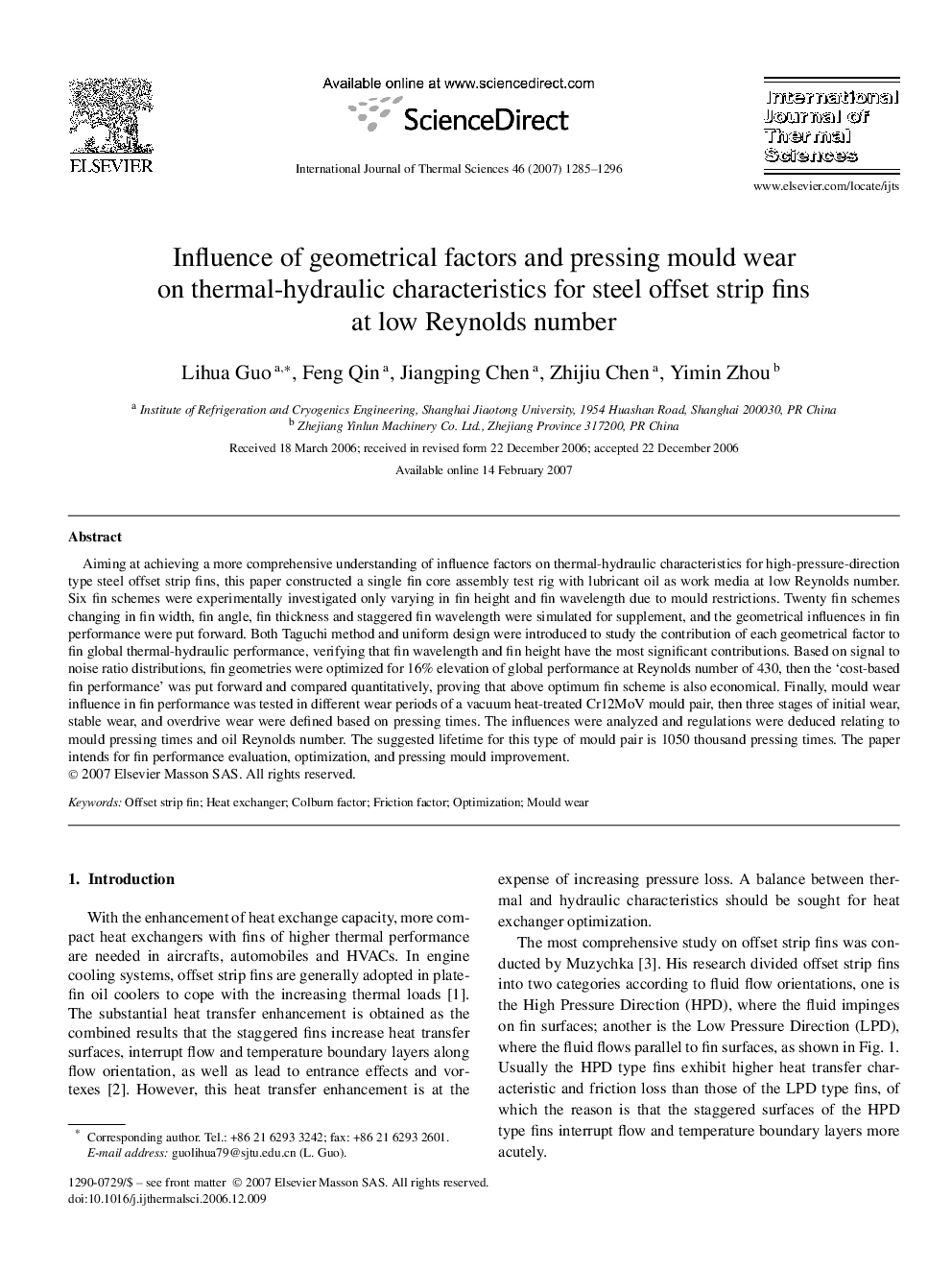| Article ID | Journal | Published Year | Pages | File Type |
|---|---|---|---|---|
| 669814 | International Journal of Thermal Sciences | 2007 | 12 Pages |
Abstract
Aiming at achieving a more comprehensive understanding of influence factors on thermal-hydraulic characteristics for high-pressure-direction type steel offset strip fins, this paper constructed a single fin core assembly test rig with lubricant oil as work media at low Reynolds number. Six fin schemes were experimentally investigated only varying in fin height and fin wavelength due to mould restrictions. Twenty fin schemes changing in fin width, fin angle, fin thickness and staggered fin wavelength were simulated for supplement, and the geometrical influences in fin performance were put forward. Both Taguchi method and uniform design were introduced to study the contribution of each geometrical factor to fin global thermal-hydraulic performance, verifying that fin wavelength and fin height have the most significant contributions. Based on signal to noise ratio distributions, fin geometries were optimized for 16% elevation of global performance at Reynolds number of 430, then the 'cost-based fin performance' was put forward and compared quantitatively, proving that above optimum fin scheme is also economical. Finally, mould wear influence in fin performance was tested in different wear periods of a vacuum heat-treated Cr12MoV mould pair, then three stages of initial wear, stable wear, and overdrive wear were defined based on pressing times. The influences were analyzed and regulations were deduced relating to mould pressing times and oil Reynolds number. The suggested lifetime for this type of mould pair is 1050 thousand pressing times. The paper intends for fin performance evaluation, optimization, and pressing mould improvement.
Related Topics
Physical Sciences and Engineering
Chemical Engineering
Fluid Flow and Transfer Processes
Authors
Lihua Guo, Feng Qin, Jiangping Chen, Zhijiu Chen, Yimin Zhou,
